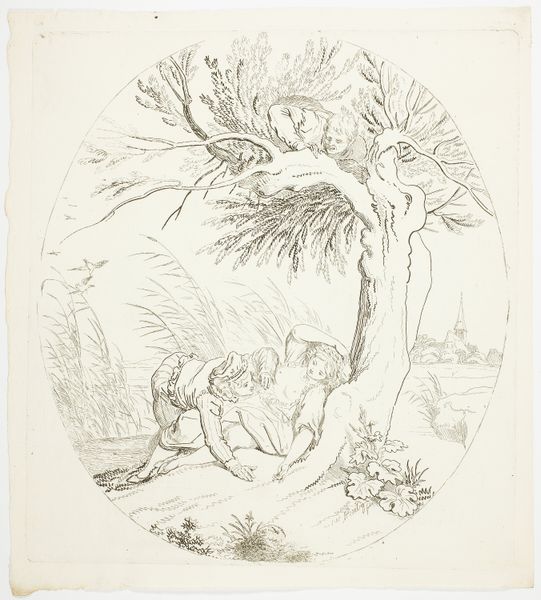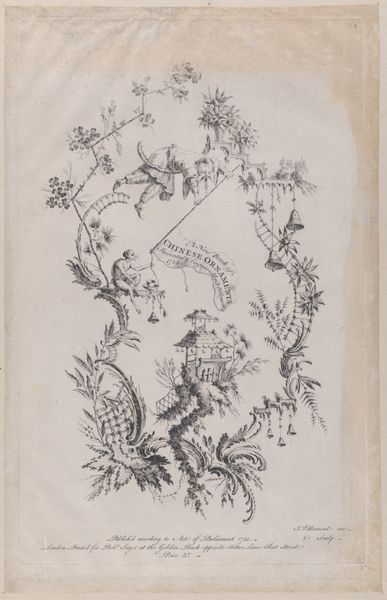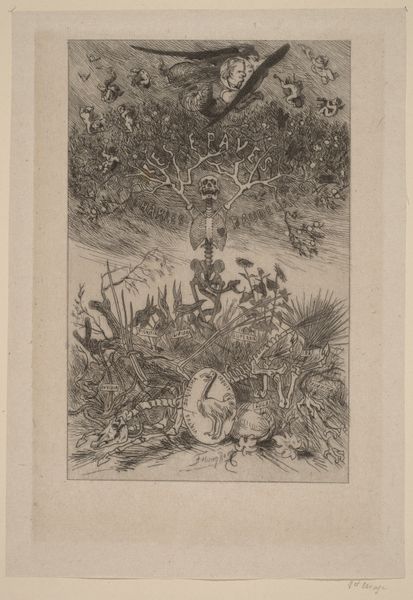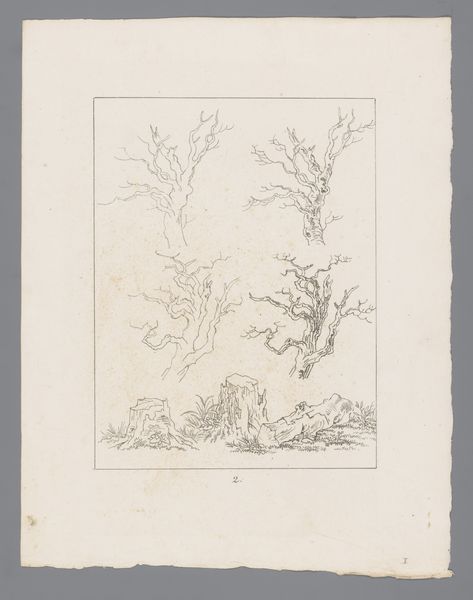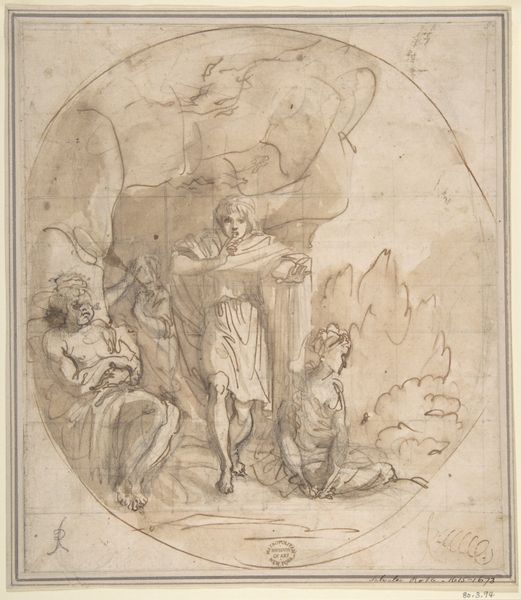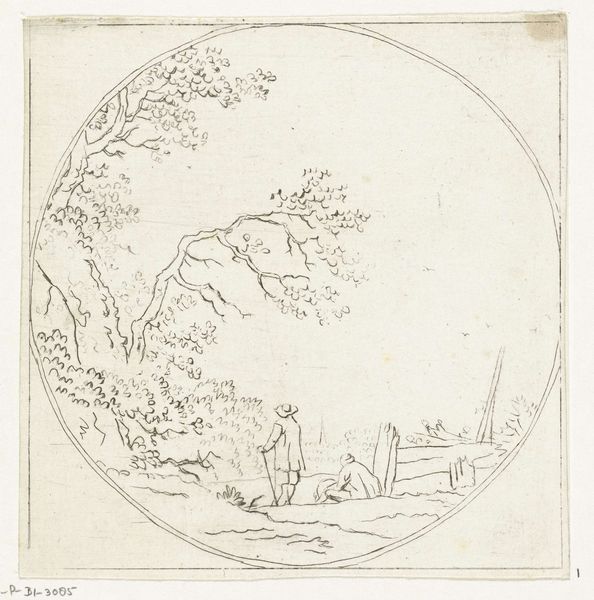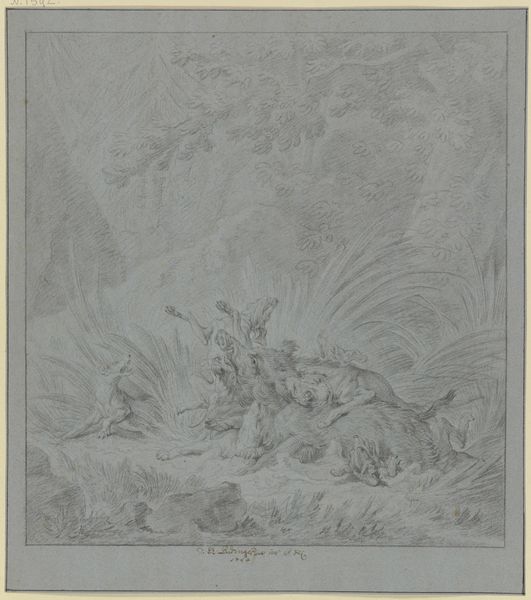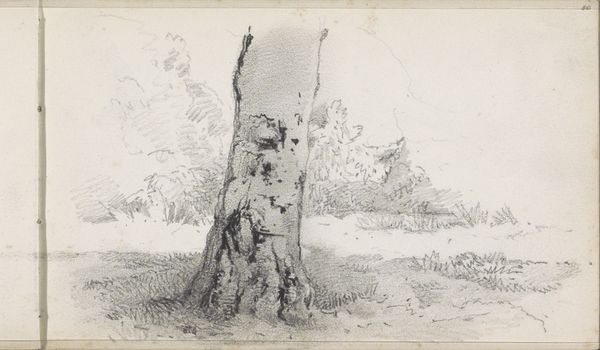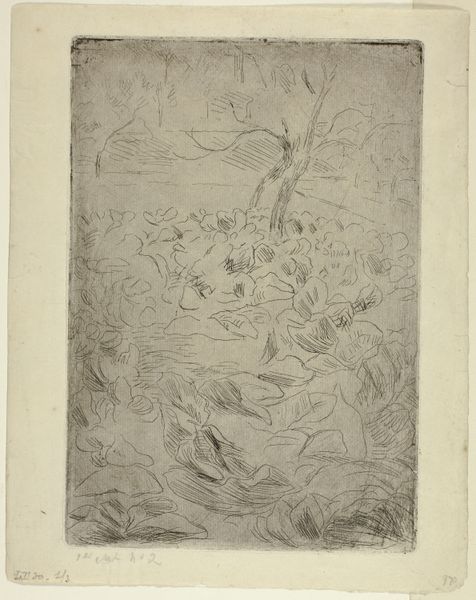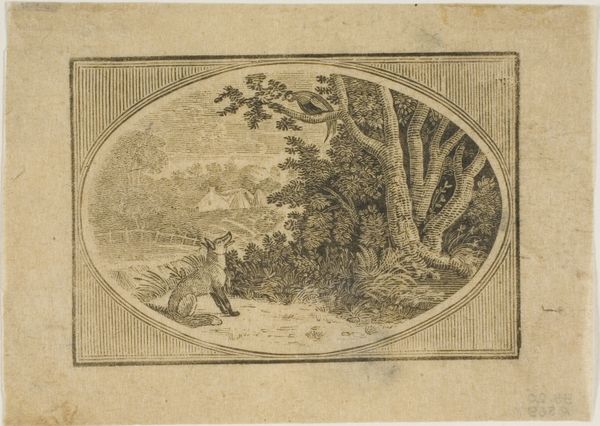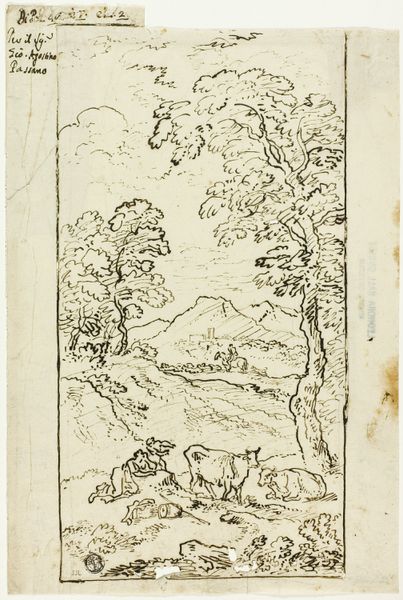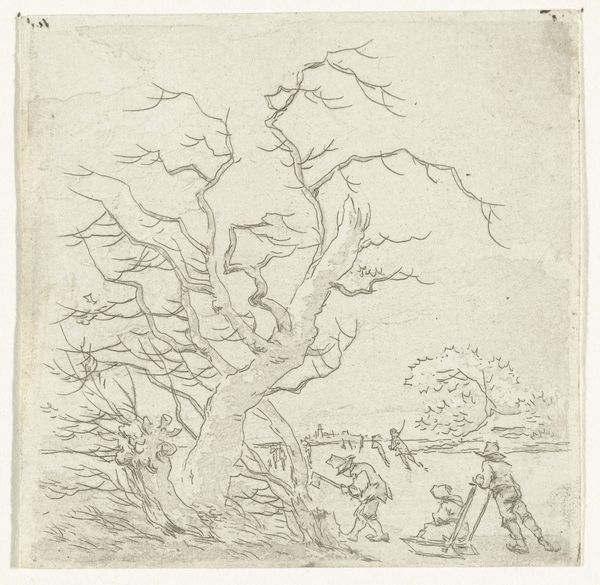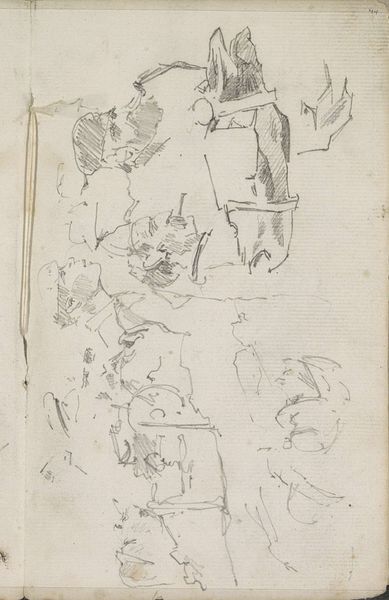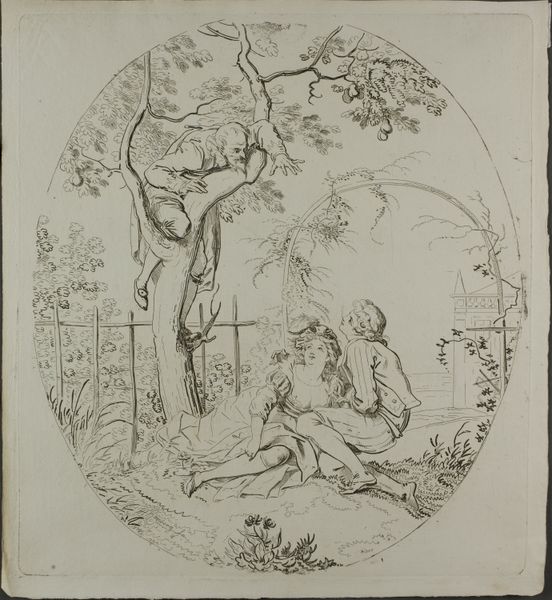
drawing, print, ink, pen
#
drawing
# print
#
pen sketch
#
etching
#
ink
#
linocut print
#
pen
Dimensions: 12 1/4 x 11 3/4 in. (31.1 x 29.8 cm)
Copyright: Public Domain
Curator: This is Karl Bodmer’s "Design for a Plate," created sometime between 1825 and 1893. It’s currently held at the Metropolitan Museum of Art. Editor: It’s a very intimate piece. There's a certain quietude to it; it's like peeking into a secret little world rendered in delicate lines. The blue paper gives the brown ink a ghostly and aged feel. Curator: Bodmer's process often involved meticulously documenting the natural world, particularly as a European artist encountering the landscapes of the Americas. In this etching with pen and ink over graphite, there is an examination of nature, albeit a fabricated one intended for a domestic product, a plate. It invites questions around class, decorum, and science. Editor: Precisely. Look at how the ink seems almost provisional, and you see a relationship to labor. These aren't finished forms, they look like preparatory gestures. What's curious to me is the labor enacted on a sketch for mass consumption. Curator: The circular composition, intended for a plate, is interesting, too. Circles have historically represented wholeness, completion, perhaps even utopian visions. By framing this humble scene within such a potent shape, Bodmer elevates the natural world. Consider the tensions between this circular framing of unity with the prickly thorned branches, speaking to division, restriction. What socio-political message might exist in that relationship? Editor: An etching printed onto a household plate blurs distinctions between art and commodity, which would also be relevant if situated as middle-class aspirations, and so you have all kinds of competing interests made possible through craft. These thorns don't threaten only nature's wholeness, as it relates to utopian themes; they potentially threaten class mobility. Curator: And in seeing nature rendered for a decorative plate, the very process becomes visible—the tension between our idealization of nature and its practical applications and subjugation to commodity. Editor: Well, for me, the quiet beauty lies in the materials and their potential, not simply in the image itself but also in the process it captures. Curator: For me, it's more about the wider narratives, about power, and how this sketch can give an entryway into class aspirations, industrial changes, and the scientific lens through which we engage with nature.
Comments
No comments
Be the first to comment and join the conversation on the ultimate creative platform.
